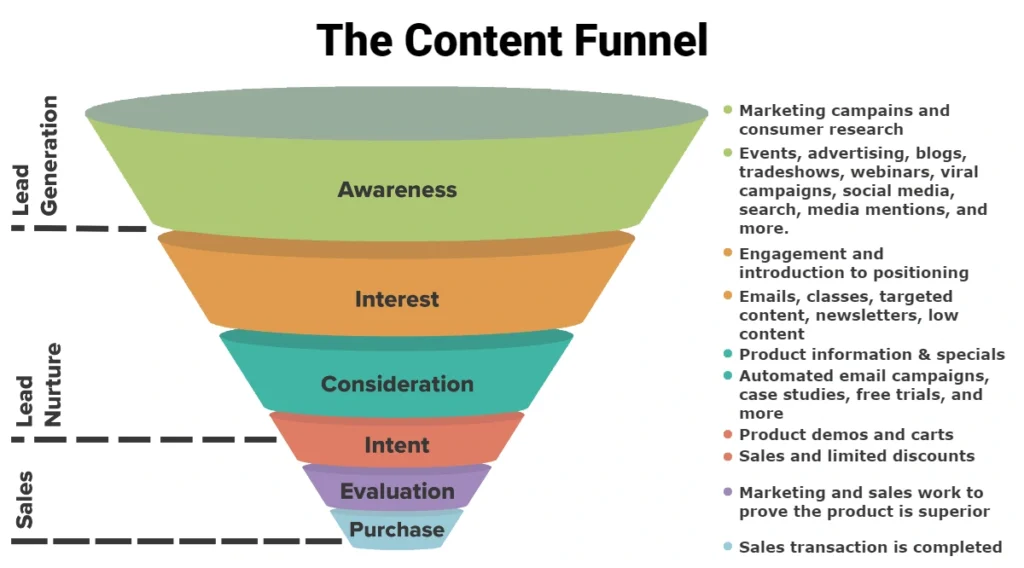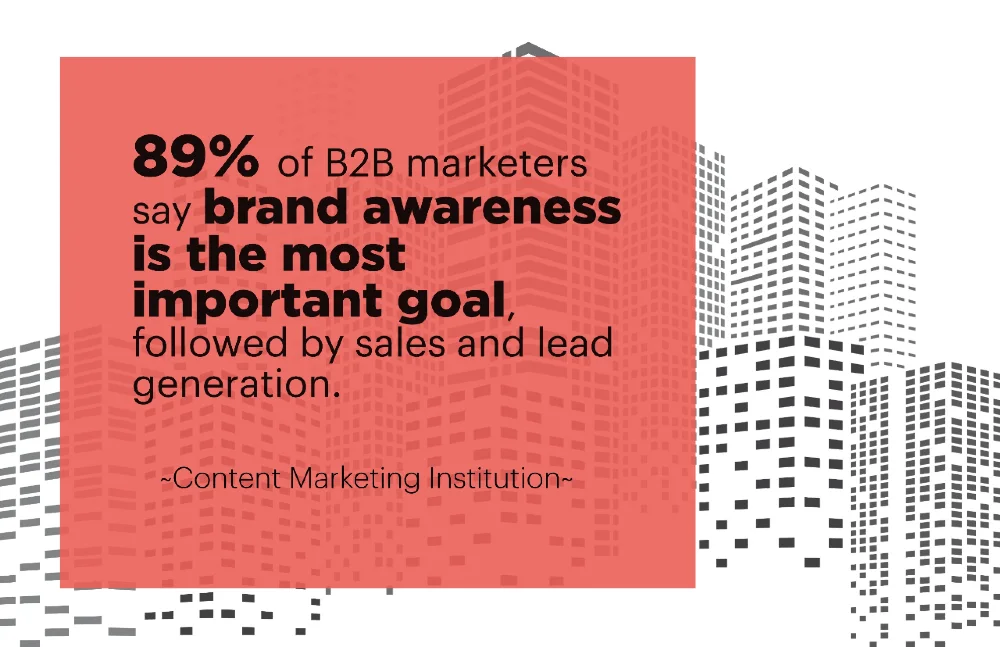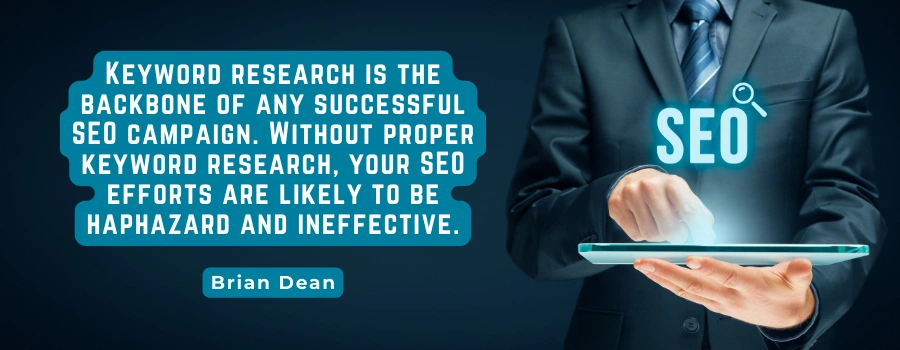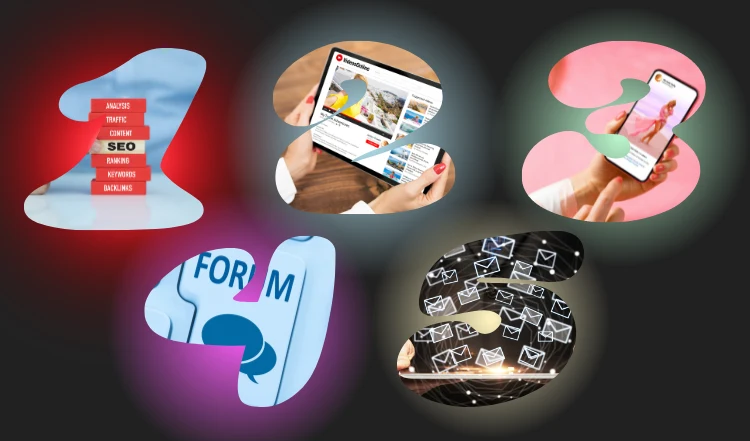Content Creation: The Unseen Hero of Traffic Generation
Let’s cut to the chase: content is the fuel that powers your traffic generation engine. But not just any content.
We’re talking high-quality, engaging, value-packed content that your audience can’t help but consume.
Good content attracts, engages, and converts. It draws people to your website, it keeps them coming back for more, and it convinces them that you’re the real deal.
So, how do you create such content?
By understanding your audience, providing solutions to their problems, and packaging it in an engaging and shareable way. Easier said than done, right?
Remember, consistency is just as important as quality. You can’t post a fantastic piece of content and then disappear for months.
Keep the content coming, keep it fresh, and keep it relevant.
Your Content IS the First Point of Contact
Allow me to paint a picture for you. Imagine your content as the host at a swanky party (your website). This host is often the first personality guests (users) encounter.
Their demeanor, appearance, and conversation skills can either set the mood for an unforgettable soirée or have guests heading for the nearest exit.
In the same vein, your content is often the first point of contact between your business and potential customers.
From your social media posts and blog articles to your website copy and email newsletters, each piece of content you put out there, sets the tone for your brand. And believe me, first impressions count.
But it’s not just about the initial meet-and-greet. Your content has a significant influence on your ability to generate and convert traffic. It’s like the magnetic personality that keeps guests engaged, entertained, and reluctant to leave the party.
Commit To Making Only High-Quality Content
You’ve probably heard the phrase “content is king” thrown around a lot in digital marketing circles.
And frankly, I don’t disagree.
High-quality content is the lifeblood of any effective marketing strategy. It’s the charismatic host that keeps guests enthralled and eager for more.
But what makes content “high quality”?
Three words: relevance, value, and engagement. Your content needs to be relevant to your audience, provide value to them, and engage them in a way that keeps them coming back for more.
Relevance means your content needs to address the problems, needs, and interests of your audience.
Value means your content should provide something useful – information, insights, solutions, or even entertainment.
Engagement means your content should encourage interaction, either by inviting comments, shares, likes, or triggering a response from the reader.
And of course, let’s not forget accuracy. Your content needs to be well-researched and factual.
Remember, your goal is to establish your brand as an authority in your field, and nothing can torpedo that faster than disseminating misinformation.
Know What Is Shareworthy Content

Shareworthy content isn’t just read or watched; it’s shared. On social media, via email, even in person. It’s the kind of content that people can’t help but pass on.
But what makes content shareworthy? Well, it’s unique, it’s engaging, and it’s useful. It appeals to emotions, and it resonates with the viewer’s experiences or beliefs.
In short, it’s the kind of content that people want to associate themselves with.
When your content is shared, you reach a wider audience without lifting a finger.
It’s like getting free advertising or having a team of unpaid brand ambassadors. And who wouldn’t want that?
Content is a powerful tool in your traffic generation toolkit.
Use it wisely, and you’ll be rewarded with increased visibility, credibility, and ultimately, conversions.
Be Consistent With Your Content Creation
So, you’ve nailed creating high-quality content. Great job, but hold the champagne for now. Because creating a few articles or blog posts isn’t going to cut it.
In the world of content creation, consistency is key.
Both your audience and search engines have an insatiable appetite for fresh content.
Regularly updated content keeps your audience engaged, reinforces your brand’s relevance, and gives search engines more material to index, improving your SEO.
But maintaining consistency in content creation is easier said than done, especially when you’re striving for high quality. It involves planning, commitment, and a healthy dose of creativity.
Quick tip: Develop a content calendar. This tool allows you to plan your content in advance, ensuring you never miss a beat and keep your audience eagerly anticipating your next update.
Creating high-quality, consistent content is a labor of love. It might not always be easy, but the rewards are well worth the effort.
Crafting Content for Different Buyer Journey Stages
In the grand adventure of online marketing, the buyer’s journey is the roadmap guiding your customers from prospects to purchasers, and from “Just looking, thanks” to “Take my money!” Understanding this journey is an important step in succeeding in online marketing.
The buyer’s journey consists of three stages:
- Awareness stage: This is when the customer has realized they have a problem or a need but aren’t quite sure what it is yet. Think of it as a gnawing feeling of discontent or a sneaky suspicion that something could be improved.
- Consideration stage: Now, the customer has a name for their problem or need and is on the hunt for solutions. They’re making lists, comparing options, and consuming content.
- Decision stage: The options have been weighed, the pros and cons meticulously tallied. The customer is ready to decide on a solution, to solve their problem or meet their need.
Congratulations! You’ve just unlocked the first level of understanding your customer’s mind.
Content for the Awareness Stage: Awakening Interest
Picture this: you’re sitting on a park bench, people watching. The guy with the adorable puppy catches your attention. That’s when you realize, “I want a dog.”
Welcome to the awareness stage, where you’ve just recognized a need, want, or problem.
As a marketer, this is where you step in, identifying and tapping into that raw, newly discovered need of your audience.
During the awareness stage, your goal is to educate your audience and help them understand their problem better. At this point, they’re not ready for the hard sell.
Instead, your content should focus on helping them identify their pain points, validate their concerns, and make them aware that there are solutions available.
It’s like walking past a bakery and smelling fresh bread. It awakens your hunger.
Similarly, your content should awaken the realization in your audience that they have a problem that needs solving.
And don’t forget about SEO. Most people turn to Google when they’re trying to figure out a problem. By optimizing your content for search engines, you increase the chances of your content appearing in front of people who are actively looking for information about their problem.

Content for the Consideration Stage: Showcasing Solutions
So, you want a dog. You’ve recognized your need for canine companionship, but now you’re overwhelmed with options.
Should you get a puppy or adopt an older dog? Which breed is right for you?
At the consideration stage, your audience understands their problem and is actively looking for solutions.
This is where you show them what you’ve got.
Your content should present a range of solutions, providing enough information for your audience to make an informed decision.
Case studies, comparison charts, how-to guides – these are your weapons of choice.
You’re not just providing information; you’re building trust.
You’re proving your expertise and showing your audience that you understand their problem and can provide a solution.
It’s like a good salesperson who doesn’t just push a product, but listens, understands your needs, and then presents the best options.
Content for the Decision Stage: Convincing and Converting
The decision stage is like standing at the pet store, looking at a litter of puppies, and deciding which one to bring home.
It’s a big decision, and your audience needs all the help they can get.
Here’s where your content needs to pack a punch. It should highlight your unique value proposition, provide reassurance, and most importantly, include a strong call to action.
You’re not just saying, “We have the solution to your problem.” You’re saying, “We have the best solution for your problem, and here’s why.”
Use testimonials, reviews, and case studies to back up your claims.
And don’t forget the call to action.
You’re not just providing information; you’re guiding your audience towards making a decision. A strong, clear call to action is like a neon sign saying, “This way to solve your problem.”
Creating content for each stage of the buyer’s journey is like crafting a story.
You’re guiding your audience from realizing their need to finding the solution, with your product or service as the hero of the story.
Free Traffic Generation: The Real Cost
Understanding the Trade-offs of Free Traffic
“Free traffic” is a bit of a misnomer, isn’t it?
Because while you’re not whipping out your credit card, you’re paying in other ways – time, energy, and often, sanity.
You’re out there hustling, networking, creating epic blog posts, optimizing your SEO, and engaging on social media. All these activities take considerable time and effort.
In other words, there’s a trade-off. You save money, but at the cost of your time. And if there’s one thing any good entrepreneur knows, it’s that time is our most precious resource.
So, if you’re spending hours on a free traffic strategy that isn’t paying dividends, is it truly free?
Time as a Resource: The Hidden Cost of Free Traffic
Let’s talk about time for a moment. It’s the only resource that, once spent, you can never get back.
So, when you’re opting for free traffic strategies, remember that the time you invest in them is a significant cost.
Ask yourself, how many hours do you spend on your free traffic strategies each week?
Could this time be better spent elsewhere?
And most importantly, what’s your return on that time investment?
For instance, if you’re spending 10 hours a week managing your social media accounts but only generating a handful of leads, then it’s worth reconsidering this strategy.
You might find it more cost-effective to delegate this task or invest in paid traffic methods with a higher return on investment.
The bottom line? Every “free” method has a cost. Your job is to ensure you’re getting a solid return on that investment.
So, despite the “costs,” you’re still interested in pursuing free traffic methods? Perfect, because they can be fantastic when used right!
Let’s take a look at a broad list of free traffic generation techniques:
- Blogging: Create your own blog to share relevant and engaging content. This can attract readers and potentially convert them into customers.
- Guest Blogging: Writing guest posts for other blogs can help expand your reach to new audiences.
- Press Release Distribution: Announcing important news about your business can attract attention and drive traffic.
- Video Marketing: Using platforms like YouTube for promotional videos can reach a wide audience.
- Search Engine Optimization (SEO): By optimizing your website for search engines, you can increase your visibility and organically attract visitors.
- Viral Marketing: Create engaging, unique content that people are compelled to share.
- Email Marketing: Building a mailing list allows you to keep in touch with your customers and attract repeat visits.
- Social Media Marketing: Utilizing social media platforms can help you reach a vast audience and drive traffic to your site.
- Partner Marketing: Collaborating with complementary businesses can help you reach a wider audience.
- Giving Talks: Speaking at events or conferences can boost your visibility and attract traffic.
- Webinars: Online seminars can help you demonstrate your expertise and attract visitors to your site.
- Contests: Hosting online contests can generate buzz and attract visitors.
- Podcasting: Sharing your expertise through podcasts can reach a new audience and drive traffic.
- Community Participation: Engaging in online communities like Quora, Facebook groups, and blog discussions can attract interest and traffic to your site.
While this list is not exhaustive, these methods are among the most popular and effective ways to generate free traffic.

Case Study: A Successful Guest Posting Strategy
Let’s get real. Who doesn’t love a good success story, right? But the story gets even better when it’s a story about someone who nailed the free traffic game.
I want to share a story about ‘guest posting’ with you. There is one particular story that stuck in my mind back from 2012 when I was new to content marketing and I hadn’t fully realized the post of guest posting ‘at scale’.
Then I heard the Buffer story. In case you aren’t tapped into the world of social media marketing and haven’t heard of Buffer, it’s a social media management platform that initially struggled to gain traction.
However, they ramped up their guest blogging efforts, writing not one, not two, but as many as 150 guest posts in 9 months. The result? They managed to increase their customers from almost zero to 100,000.
Now that’s some impressive free traffic!
In case you haven’t read the interview with Leo Widrich (co-founder of Buffer), click here to check it out.
While it’s an old tale, I appreciated his key takeaways, which helped me navigate my own journey through traffic generation and content marketing strategies.
Key takeaways from Leo:
- It’s all about focus. Find one traffic channel that works and scale it up.
- There’s no need to reinvent the wheel with your posts. Check out posts that already do well and pull out key elements that you think made that post successful.
- Sending out personalized outreaches and delivering great content leads to great relationships that go a lot further than a simple link request.
- Showing some examples of your past guest posts helps establish credibility.
- Measure. Measure. Measure.
Powerful stuff, right?
Don’t overcomplicate things!
His key lessons seem basic, but they are the cornerstone to great traffic.
Paid Traffic Generation: An Investment Worth Making
The Pros and Cons of Paid Traffic
Paid traffic – the strategy that can send shivers down a bootstrapping entrepreneur’s spine. But don’t let the thought of spending money on traffic scare you.
When done correctly, it can be an investment that yields a substantial return.
So, what are the benefits?
First, paid traffic can be fast. You can set up a PPC campaign today and start seeing results tomorrow.
Second, it’s scalable. If you find a campaign that’s working, you can increase your budget to drive even more traffic.
But there’s a flip side!
Paid traffic can get expensive, especially in competitive industries.
Plus, it requires knowledge and experience to do it right. If you’re not careful, you could burn through your marketing budget with little to show for it.
Understanding Pay-per-click (PPC) Marketing
There’s a rite of passage in the world of digital marketing: setting up your first PPC campaign.
And it’s not just a “set it and forget it” kind of thing.
It’s an art that requires continuous monitoring, tweaking, and refining.
The basic premise of PPC is that you pay each time someone clicks on your ad.
You can set the amount you’re willing to pay for each click (your bid), and you only pay when someone actually clicks on your ad, hence the name pay-per-click.
But wait, it’s not just about outbidding your competitors. Google, for instance, uses a complex algorithm that considers both the bid amount and the quality of your ad.
So, don’t just focus on outbidding your competitors, make your ads better too!
Strategies for Paid Social Media Campaigns
Dabbling in the world of paid social media campaigns? It’s like being given the keys to a sports car – it can either provide an exhilarating ride or end up in a spectacular wreck that costs you a lot of money.
So, let’s focus on the former and I’ll share three simple guidelines to follow:
First, identify your target audience.
Different platforms cater to different demographics.
- Instagram has a younger demographic,
- LinkedIn appeals to professionals, and
- Facebook has a wide range of users.
Match the platform with your target audience for maximum impact.
Second, ensure your content is engaging.
Paid campaigns won’t work if the content is drab. Videos, infographics, and interactive posts usually perform well.
Finally, measure and adjust.
Regularly review your campaign metrics to determine what’s working and what isn’t.
Don’t be afraid to tweak your campaigns as necessary – it’s all part of the process.
Laying the Groundwork: Crafting a Dynamic Traffic Strategy and Tailoring Content for Your Buyers
Dive into the foundational steps every website owner must know: developing a winning strategy, outsourcing the right way, building invaluable relationships, and mastering content creation for every step of the buyer's journey.
Channeling Traffic: Using Free & Paid Avenues to Boost Your Web Presence
Explore the diverse landscape of traffic generation. From organic methods to strategic paid campaigns, discover how to funnel a steady stream of visitors to your site, irrespective of your budget.
Beyond Numbers: Analytics, Conversions, and Amplifying Your Traffic Impact
It's not just about getting visitors; it's about making them count. Delve into the nuances of analyzing your traffic, enhancing conversion rates, and fine-tuning your strategies for maximized growth.





